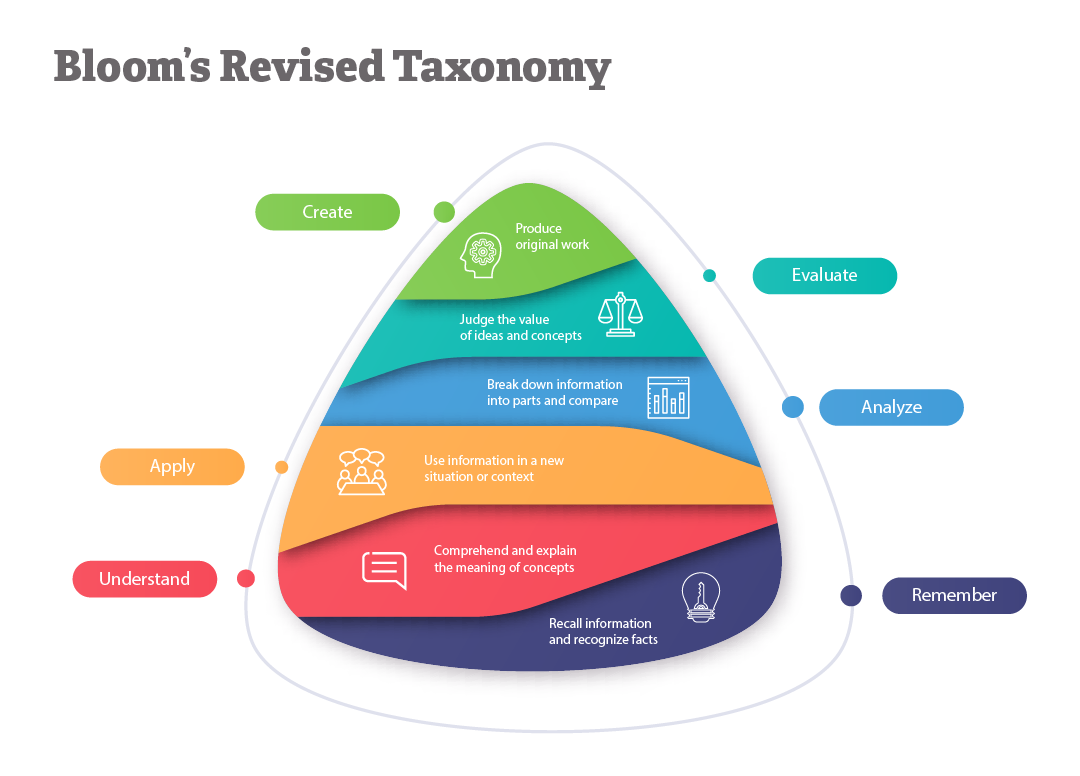Bloom's Taxonomy is a framework for categorizing educational goals and objectives. First introduced by educational psychologist Benjamin Bloom in the 1950s, the original taxonomy identified six levels of cognitive learning, arranged in order of increasing complexity.
A revised taxonomy was developed in 2001 by a group of educational psychologists led by Lorin Anderson, a former student of Benjamin Bloom. The revised taxonomy retains the original six levels of cognitive learning but modifies the categories and their descriptors to reflect the changing nature of education and the increasing emphasis on higher-order thinking skills. The revised taxonomy also includes a more explicit focus on metacognition, or the ability to reflect on one's own learning.
The revised levels of Bloom's Taxonomy, arranged in order of increasing complexity, are:
These levels are often represented as a pyramid, with Remembering at the bottom and Creating at the top, indicating that higher levels of cognitive learning build upon lower levels.
Bloom's Taxonomy has become a widely used tool for educators to design and evaluate learning objectives and activities that promote critical thinking and deep understanding. It can also be applied beyond academic settings, such as in professional development and personal growth.
